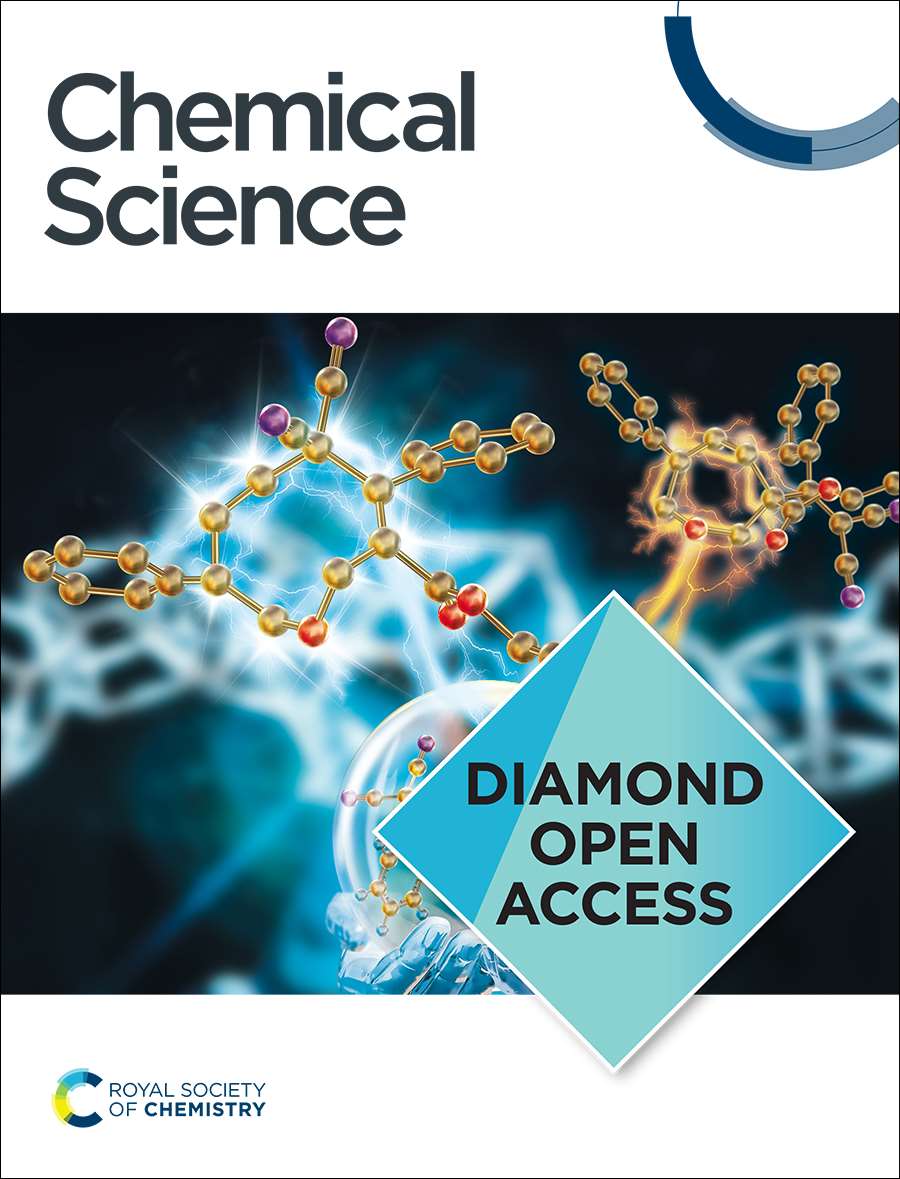基于深度学习的含多系统交叉机制的重原子无三重态光敏剂的有效生成
IF 7.6
1区 化学
Q1 CHEMISTRY, MULTIDISCIPLINARY
引用次数: 0
摘要
光动力疗法(PDT)是一种临床认可的治疗方式,在癌症治疗中显示出巨大的潜力,而三重光敏剂(PSs)在其疗效中起着关键作用。尽管深度学习已成为新一代材料发现工具,但现有方法主要针对有限的三态ps子集,例如热激活延迟荧光(TADF)材料,而忽略了高单线态和三重态之间的临界系统间交叉(ISC) (ΔESnTn)。为了克服这一限制,我们编制了一个包含各种ISC机制的三重ps的综合数据集(~1.90 × 109)。然后,我们提出了一种新的策略,该策略结合了两个模型:基于片段的模型(fragg -MD)和基于字符的模型(MD),两者都集成了条件转换器、循环神经网络和强化学习。硅实验表明,fragg -MD模型在生成更大的共轭基序、更高的平均环数和原子数方面优于MD模型;而MD模型产生了两倍的独特基序,并在新颖性和多样性方面表现出色,如条件和MOSES指标所评估的那样。因此,我们的方法对于修饰共轭基序和设计新的三重态ps是非常有效的。值得注意的是,最近报道的高效三重态ps已经通过我们提出的模型通过烧蚀实验重新确定,该模型以ΔESnTn为目标,显著优于传统基线,预测准确率为73%,而传统基线为4%。我们的方法有可能为发现适用于PDT的新型ps建立一个新的范例。本文章由计算机程序翻译,如有差异,请以英文原文为准。
Effective Generation of Heavy-Atom-Free Triplet Photosensitizers Containing Multiple Intersystem Crossing Mechanisms Based on Deep Learning
Photodynamic therapy (PDT) is a clinically approved therapeutic modality that has demonstrated significant potential for cancer treatment, and triplet photosensitizers (PSs) play a key role in its efficacy. Despite deep learning has emerged as a next-generation tool for material discovery, existing methods mainly target a limited subset of triplet PSs, such as thermally activated delayed fluorescence (TADF) materials, neglecting the critical intersystem crossing (ISC) between high-lying singlet and triplet states (ΔESnTn). To overcome this limitation, we compiled a comprehensive dataset (~1.90 × 109) of triplet PSs encompassing various ISC mechanisms. Then, we proposed a novel strategy that incorporates two models: a fragment-based model (Frag-MD) and a character-based model (MD), both integrating a conditional transformer, recurrent neural networks, and reinforcement learning. In silico experiments reveal that the Frag-MD model outperforms the MD model in generating larger conjugated motifs with higher average ring numbers and atom counts; while the MD model generates twice as many unique motifs and excels in novelty and diversity, as evaluated by conditional and MOSES metrics. Therefore, our approach is highly effective for modifying conjugated motifs and designing novel triplet PSs. Notably, recently reported high-efficiency triplet PSs have been re-identified through ablation experiments using our proposed models, which target ΔESnTn and significantly outperform traditional baselines, achieving a prediction accuracy of 73% versus 4%. Our approach holds the potential to establish a new paradigm for discovering novel PSs applicable in PDT.
求助全文
通过发布文献求助,成功后即可免费获取论文全文。
去求助
来源期刊

Chemical Science
CHEMISTRY, MULTIDISCIPLINARY-
CiteScore
14.40
自引率
4.80%
发文量
1352
审稿时长
2.1 months
期刊介绍:
Chemical Science is a journal that encompasses various disciplines within the chemical sciences. Its scope includes publishing ground-breaking research with significant implications for its respective field, as well as appealing to a wider audience in related areas. To be considered for publication, articles must showcase innovative and original advances in their field of study and be presented in a manner that is understandable to scientists from diverse backgrounds. However, the journal generally does not publish highly specialized research.
 求助内容:
求助内容: 应助结果提醒方式:
应助结果提醒方式:


